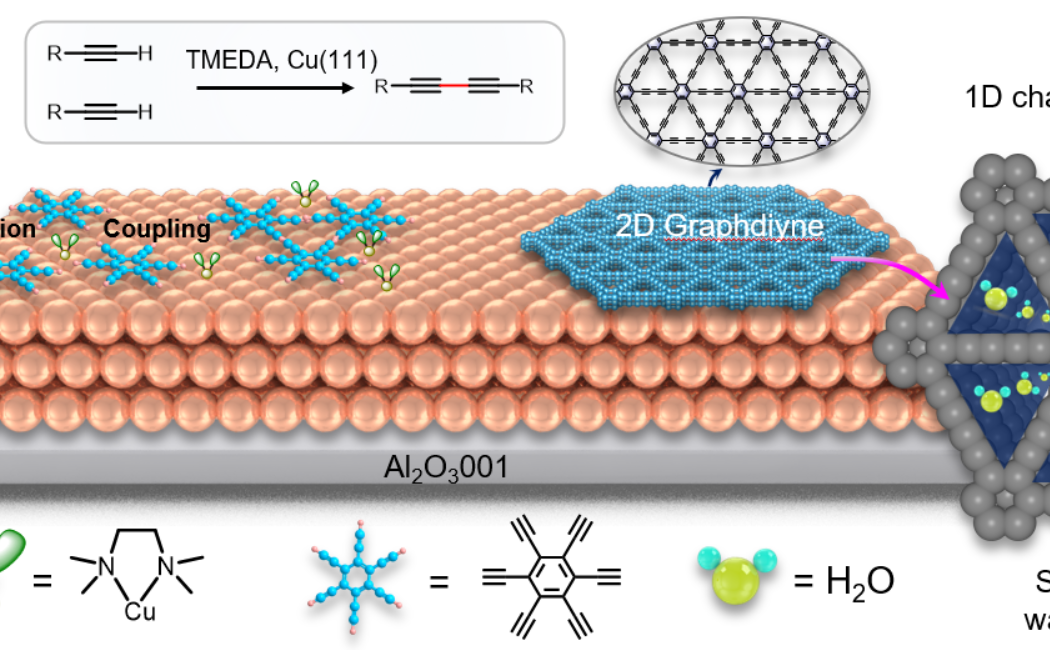Our work on water desalination using ultra-thin graphdiyne (GDY) membranes is now online in the Nature Water Journal! Many congratulations to Dr. Jiaqiang Li, Dr. Xiaowei Liu, Dr. Li Cao, other collaborators, and the whole team! These membranes feature ordered angstrom-scale channels that enable ultrahigh water/NaCl selectivity (~60,000) and >99.7% salt rejection while achieving rapid water permeance (~32.9 mol m⁻² h⁻¹ bar⁻¹). By confining water into single-file chains within hydrophobic channels, the design mimics biological aquaporins but surpasses them in scalability and stability, offering transformative potential for sustainable water purification and energy conversion.
Paper Abstract:
Developing artificial membranes with stable and uniform angstrom-scale channels that can effectively reject hydrated ions is a substantial challenge but important in water desalination and energy conversion/storage applications. Achieving precise water/ions separation while maintaining high water flux requires a membrane microstructure engineered with molecular precision. This study reports the successful synthesis of ultra-thin, centimetre-scale graphdiyne (GDY) films with ordered one-dimensional (1D) channels using single-crystalline Cu (111) as the growth substrate and demonstrates their exceptional performance as molecular sieves for highly efficient water/ion separation. The optimized membrane exhibits an ultra-high water/NaCl selectivity of 5.96 × 104, outperforming state-of-the-art membranes, at a water permeance of ∼32.9 mol m⁻² h⁻¹ bar⁻¹ and a salt rejection exceeding 99.7% for small ions in seawater. Mechanism studies reveal that the hydrophobic angstrom-scale channels in GDY crystals force water molecules into a single-file configuration with 1D hydrogen bond during water permeation. The 1D water chain enables the GDY membrane to facilitate rapid (diffusion constant as high as 1.3 × 10−4 cm2 s−1) and selective proton transport via the Grotthuss mechanism. This work contributes to the development of carbon nanomaterial membranes for precise molecular sieving and biomimetic protonophores.
Paper Link:
